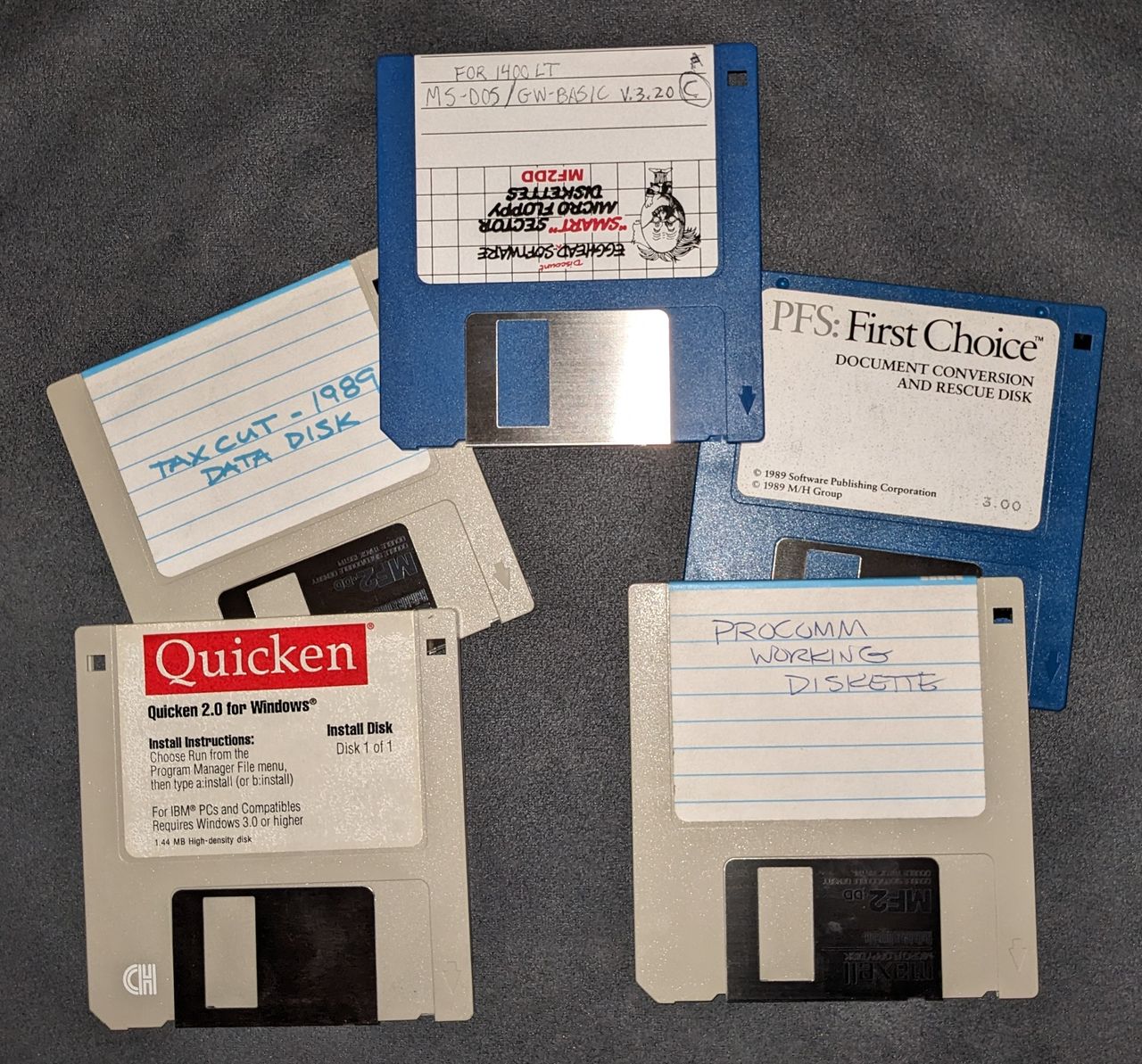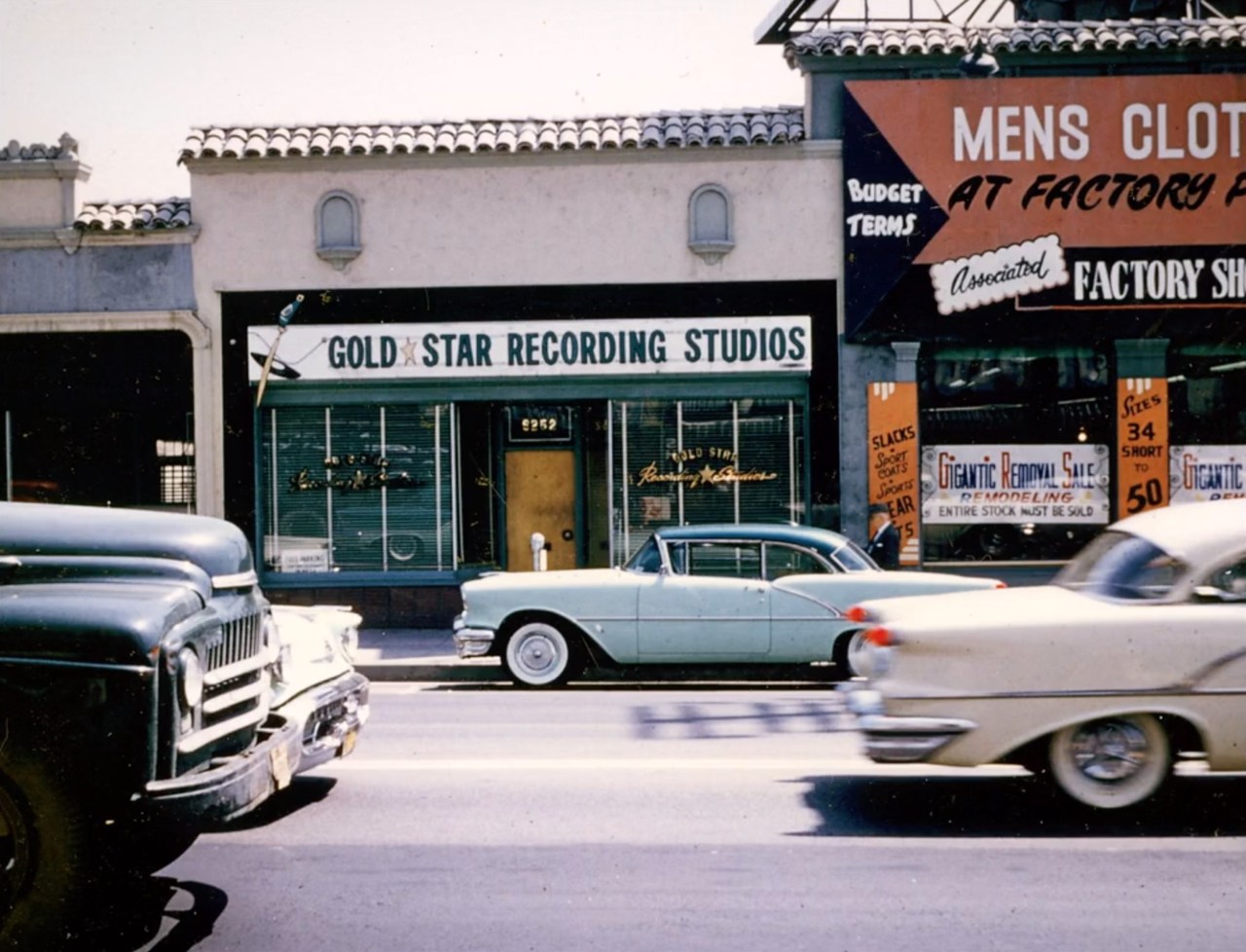This is what happens when powering up a personal computer, going all the way back to the primitive system that motivated Bill Gates to drop out of Harvard.
Category: Tech
My Internet Half-Life
It’s been thirty years since I connected to the Internet from home and bought my first desktop PC. Those two events go together. Until then I had been using a Tandy 1400 LT dual-floppy portable DOS PC with a monochrome LCD screen, bought used from a brother-in-law.
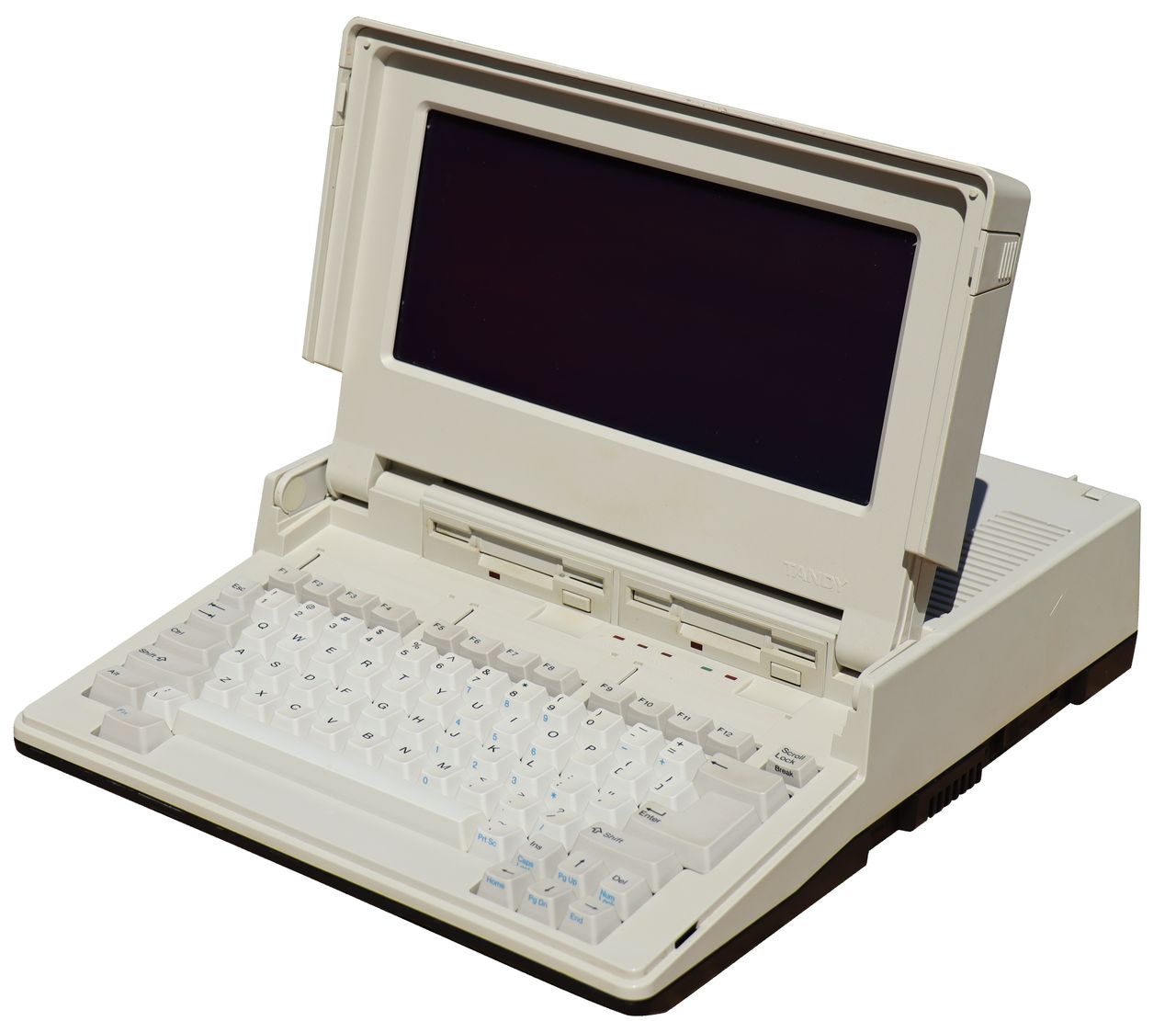
The 1400 LT was excellent hardware that I enjoyed using very much. Extremely durable, its mechanical keyboard would impress any laptop user today. It even had an RCA composite video connector that displayed CGA graphics on a regular TV. Perfect for playing games, such as they were.
The software I used included Quicken, TaxCut, ProComm, and an office application called PFS: First Choice.
Accessories were an Intel 14.4 Kbps modem on the serial port and an Epson dot-matrix printer on the parallel port. The LaserDisc store, Sight & Sound, had a bulletin board that I dialed into with ProComm. I could check on new releases, titles in stock, and chat with the staff and other customers.
Circle Dialing phone service, that seems so ridiculous now, required picking a plan with a limited number of towns you could reach without making an expensive long distance call. I chose my plan based on the towns where my parents and my in-laws lived. Also included were Waltham, where the store was, and Bedford, where TIAC, The Internet Access Company, had a dialup access point.
CompuServe and AOL never interested me. I didn’t see the point in using commercial online networks. The 1400 LT would have been perfectly good for dialing into a UNIX Shell account at TIAC, and I considered doing that, but I was traveling on business up to half of the time, leaving my wife alone to care for our infant son. So I delayed getting online.
Reading an issue of PC Magazine in late 1993, I saw an item about the release of the Mosaic Web browser. I realized that although the Internet wasn’t yet mainstream, it was about to explode, and I should get ahead of the curve. The problem was, to run Mosaic I needed a much better system than my clunky little laptop, and I wouldn’t know how much I could spend until seeing that year’s bonus at work. I found that out on January 31, and I set a budget of $1500, equivalent to more than $3000 today.
Scouring Computer Shopper magazine, the best I could do for that bottom-dollar price was to order a no-name PC clone with an AMD 386 40 MHz processor, 4 megs of memory, a 160 megabyte hard drive, and a 14-inch SVGA CRT monitor. No sound card, no CD-ROM drive. DOS and Windows 3.1 were included, but not pre-installed.
Before the made-to-order system was delivered, I signed up for a UNIX Shell account at TIAC, and got online with the 1400 LT. I played with the text-based Web browser called Lynx, but mostly I explored Usenet newsgroups. In fact, a few months later, that was how I first learned of Prue’s married and maiden names.
Once the new system was installed and ready, I connected the modem and dialed into TIAC. I switched my account to a more expensive SLIP/PPP plan, and paid for Trumpet TCP/IP. Mosaic was free. ProComm included the necessary file transfer programs. After downloading and installing Trumpet and Mosaic, I was off and running, or at least crawling.
Paramount had a Star Trek Web page, and despite the… var-y… slow… speed… of… the… con-nec-tion, I was astounded. The mouse pointer was navigating a Web page. I had seen the future, and it was graphical Web browsing.
A series of modem upgrades ultimately maxed out at 33.6 Kbps, until moving to the house I’m in now, where Road Runner broadband service was available at a screaming 1.5 Mbps.
What happened to the 1400 LT? I sent it to my brother. His stepdaughter stole and pawned it.
What happened to my first desktop? It was too slow to run Windows 95, so I upgraded the BIOS to support an 83 MHz Intel replacement processor. Later, after getting a new system with a Pentium II, the old desktop was my first Internet router, to have more than one PC in the house access the Net. (Much better than the connection sharing feature in Windows 98.)
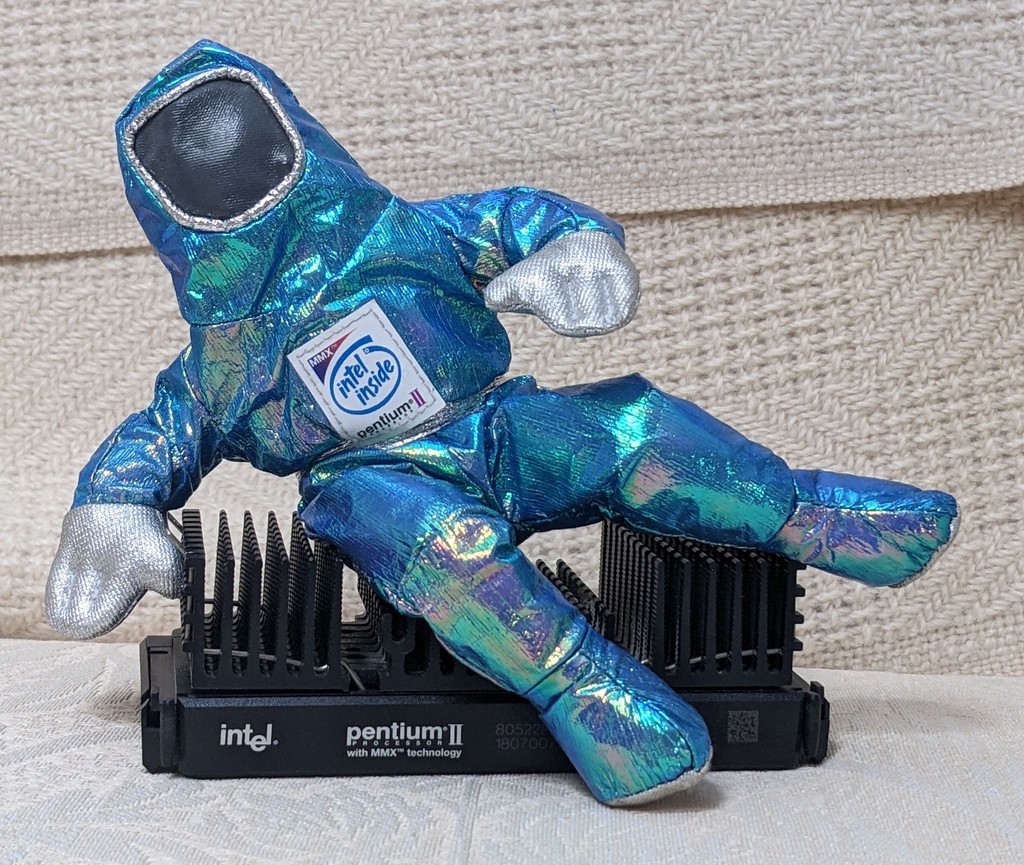
I installed two $15 Ethernet cards and created a bootable diskette with a custom build of Linux. Later, after buying a dedicated hardware router (pre-WiFi), I put the 8-year-old PC in the back of my 13-year-old Honda Civic hatchback, intending to take it to work. Instead, the all-steel case with internal bracing helped to protect me by providing some support in a rear end collision as I sat at a red light. The car crumpled, the PC was wedged in too tightly to remove, and the case was barely bent.
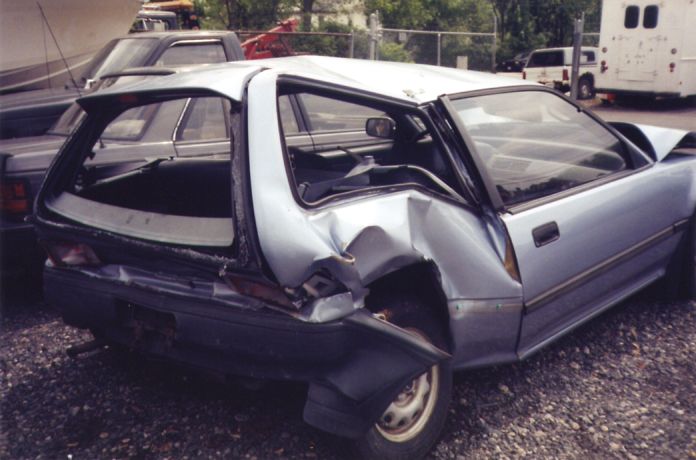
PHP PHEW!
More than two years after finally getting this site stabilized, I continue to be nervous whenever any change is made to the layers of software sitting below WordPress.
Yesterday, as required by the hosting service, I updated the version of PHP that WordPress runs on, from release 8.0 to 8.2, and………… a miracle. Nothing bad happened.
The End of MySqueezebox
Well, this sucks royally. I have been subscribing to Pandora’s basic service, free of commercials, at $3.99 for years. As a bonus on Logitech Media Server (formerly Squeezebox), Pandora has excellent sound quality, running at 192 kbps. It could come to an end with this announcement from Logitech.

UESmartRadio.com and MySqueezebox.com Servers 2024-01-25, 18:07 Hello Squeezebox and UE SmartRadio users: After a more than ten year journey, as of February 2024, we will discontinue our UESmartRadio.com and MySqueezebox.com servers. We would like to thank you for your loyalty and support throughout this time. It has not been an easy decision to make, particularly because we have been maintaining the Squeezebox servers more than a decade after we stopped selling the devices themselves. However, after carefully evaluating the changing music services landscape and ever-evolving security requirements, we have to recognize that, going forward, we will not be able to maintain our services to the necessary standards. As a consequence of this shutdown, support for services integrating with MySqueezebox.com/UESmartRadio.com will no longer be available on your devices. Most notably this will impact users of TIDAL, Pandora, and Deezer. Nevertheless, you will still be able to use your UE SmartRadio/Squeezebox by accessing the Logitech Media Server locally. UE SmartRadio users will need to migrate to Squeezebox, and all users will need to download and run some software locally, which can be found here. (To initiate the transition, navigate to "Advanced Settings" on your Smart Radio and scroll down to select "Switch to Squeezebox”.) That means you can continue to enjoy much of the functionality you love. We're here to assist you during this transition, and we will be available to answer any questions or provide guidance should you encounter any difficulties. Thank you again for being part of our community. If you have any questions, please reach out to us at forums.slimdevices.com. Last edited by mherger; 2024-01-25, 18:15.
It’s not clear if Pandora will continue to work through my in-house Logitech Media Server installations. Even if it doesn’t, my Pandora account works in the living room with my phone and Chromecast Audio, and downstairs on the Onkyo receiver’s app.
I’m okay with losing Pandora on the Logitech Squeezebox Radios in the bedroom and the kitchen. What’s not okay would be losing TuneIn on the Radios. It depends on whether or not TuneIn still works through my local LMS installations after MySqueezebox is shut down. All of this is the result of living in a Bluetooth world.
Follow-up: On Logitech Media Server I signed out of mysqueezebox.com and restarted the service. TuneIn is still working. *WHEW* I think that should be a definitive test. Pandora definitely will not work without MySqueezebox.

Fit for a King
Ortofon of Denmark celebrates the coronation of King Frederik X as only it can, with this series of tutorials on tonearm installation and alignment.

